Battery life has always been one of the most crucial aspects of a smartphone. With so many flagship smartphones today offering large battery capacities, one question popped up: which flagship smartphone had the best battery life?
With that in mind, we took several high-end smartphones and ran them through a series of tests to measure their battery life. To our surprise, some of the results are quite…unexpected, to say the least. Let’s find out how the Huawei Mate 8, the Nexus 6P, the Sony Xperia Z5 Premium, and the Samsung Galaxy S7 edge stack up against each other.
In these battery drain tests, we made sure that all four devices were set up as similarly to each other as possible. The display brightness was set to 100%, the media volume at about 50%, and Silent Mode was activated. Of course, we also performed a factory reset on these smartphones before performing the tests.
To take things one step further to replicate real life usage, we set up these four smartphones to be ready for use: they were logged on to the same Google, Facebook, Messenger, as well as Instagram accounts. Other apps that we deem necessary for a smartphone – such as WhatsApp and YouTube, if not already pre-installed – were also downloaded. Simply put, any one of these devices are ready for use once a SIM card is inserted.
Now that we have set up our parameters, let’s move on to the first test.
First Test: AnTuTu Tester
We start off this battery life drain test with a synthetic benchmark app from AnTuTu. In this test, all four devices ran the same built-in battery life test of the app at the same time; any notification or email that comes in will appear on all four devices, eliminating as much inconsistencies as possible.
The Xperia Z5 Premium was the first device to end the test. We’re not sure if it’s the 4K resolution kicking in during this test, or its 3,450mAh battery (the smallest capacity among the lot alongside the Nexus 6P), but this was a rather poor showing from Sony.
After the Xperia Z5 Premium is the Mate 8, followed very closely by the Nexus 6P, which surprised us quite a bit. On paper, the Nexus 6P should have worse battery life. It has a 3,450mAh battery in comparison to the Mate 8’s bigger 4,000mAh battery, and the 6P also has a higher resolution 1440p display (the Mate 8 has a Full HD display).
Even more surprising is perhaps the Galaxy S7 edge’s results. While it won by a rather small margin over the Mate 8, it still manages to outlast the other devices in this list. This is despite the fact that the S7 edge has a smaller 3,600mAh battery and a sharper 1440p display compared to the Mate 8.
Let’s draw some conclusions about the results. Obviously, what’s written on the spec sheet definitely does not translate to real-life results – this test may be generic, but read on to see what we mean.
The other thing is in the hardware itself. The Mate 8 and Z5 Premium use IPS displays, while the Nexus 6P and Galaxy S7 edge feature AMOLED screens – and the results (especially from the other tests below) are plain to see (sorry).
AnTuTu Tester’s battery test displays a lot of black backgrounds, and AMOLED displays typically have better energy consumption in this scenario; when displaying blacks, AMOLED panels switch off individual pixels, which in turn helps greatly with battery life.
Winner: Samsung Galaxy S7 edge. The power efficient Exynos 8890 and Super AMOLED display helped this device get the best score among these four devices. But we’re obviously not done yet.
Second Test: PCMark
In our second test, we did things a little differently. To ensure that PCMark’s battery life test was as accurate as possible, we activated Airplane Mode on all four devices to eliminate any inconsistencies. Just like the previous test, the brightness level and volume were set at the same level; we also ensured these smartphones’ battery levels were at 100% before we started the test.
Here are the results of the PCMark battery life test:
Just like the previous test, the Galaxy S7 edge proved to be the longest-lasting device (by quite a distance, we must say). In second place we have the Mate 8, followed by the Nexus 6P and Xperia Z5 Premium; in the previous test, the 6P actually had a slightly higher score than the Mate 8.
Evidently, the AMOLED display of the Nexus 6P did not help it as much as it did in the previous test, although the S7 edge still has the best battery life here; this is likely due to the Exynos 8890 processor, which is newer and more power efficient than the controversial Snapdragon 810 processor.
Winner: Samsung Galaxy S7 edge. It lasted almost two hours longer than the Mate 8, with a sharper display and a smaller battery. That says a lot.
Third Test: Video Loop
This is a rather straightforward test. Using Android’s YouTube app, we downloaded this video in 720p – YouTube didn’t allow us to download the video in 1080p – for offline viewing, and we looped the video until the devices run out of juice. To our surprise, some of these devices lasted much, much longer than we anticipated.
About four hours and 20 minutes into the test, these are the battery capacities of the devices:
Just like the previous test, the Xperia Z5 was the first to deplete its battery; this happened around the 4:55 mark. After the Z5 was the Mate 8, which had its battery run out at approximately the 6:35 mark. This is followed by the Nexus 6P after around seven hours and 50 minutes. The Galaxy S7 edge, on the other hand, finally had its battery drained after 13 hours and 30 minutes. See a similar pattern to the first test here?
Once again, it’s evident that smartphones with an AMOLED display have better battery life than those with an LCD/IPS panel. Devices with smaller displays – with the exception of the Z5 and its 4K display – naturally last longer in these tests as well.
Just to make sure, we ran the same test again – surely there’s no way the S7 edge could be head and shoulders above the others? This time, we used a different video to see if anything changes. While the timing varied slightly from the first test, these devices had their batteries drained in the same order: the Z5 Premium ended the test around the 5:30 hour mark, the Mate 8 at about 6:20, the 6P at approximately 7:15, and finally, the S7 edge at around 13 hours 20 minutes.
The S7 edge – again – won by a huge margin, which still puzzled us: how can it last twice as long as the other devices in this list? Needless to say, we had to be absolutely sure, so we ran the same test for a thirdtime. Here are the results:
These results are much more interesting than the previous two. For one, this is the Z5 Premium’s worst result: it only had a screen on time of four hours and 55 minutes. The Mate 8, on the other hand, is much higher at six hours and 27 minutes.
This is also by far the Nexus 6P’s best time at seven hours and 58 minutes; that’s almost eight hours of screen on time, which is nothing to sneeze at. But the times pale in comparison to the S7 edge’s whopping screen on time of 14 hours.
Winner: Samsung Galaxy S7 edge. Like the first two tests, the S7 edge bested the other three smartphones in this list, and by a much larger margin as well. Evidently, there’s something about Samsung’s 14nm Exynos chip that enables a low-power environment when the phone is running certain tasks.
It’s worth noting that the YouTube video loop test results vary widely between tests. In the case of the S7 edge, the margin is as high as 40 minutes of playback. In addition to that, the YouTube test also doesn’t exactly replicate real life usage; the former two tests – AnTuTu Tester and PCMark – are much more indicative of real life usage as they test a wide range of different usage scenarios.
While the S7 edge is the overall winner of these battery drain tests, it’s worth noting that it is one of the two costliest smartphones in this list. Retailing at RM3,099, it is similarly priced to the Xperia Z5 Premium, which is the worst performer here. It’s evident that the 4K display of the Z5 Premium consumes quite a lot of power; we suspect the Snapdragon 810 didn’t help as well. As for the Nexus 6P, it retails at RM2,698; that’s RM599 more than the base model of the Mate 8 (RM2,099), which is the variant we used for these tests.
——————————
For what it’s worth, I’ve used all four devices as my daily driver over the course of this year, and I can say with confidence that despite being neck-and-neck with the Nexus 6P, I found the Mate 8 to last far longer.
Incidentally, both the Mate 8 and S7 edge have similar battery life despite the hardware differences; these two premium phones were also the only two in this list that lasts well into a second day without charging.
Our three battery tests here won’t give a perfectly accurate description of the battery life on the four devices, but they certainly do give a good indicator for how they perform in day-to-day use.

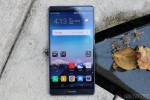

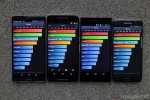

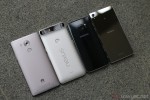
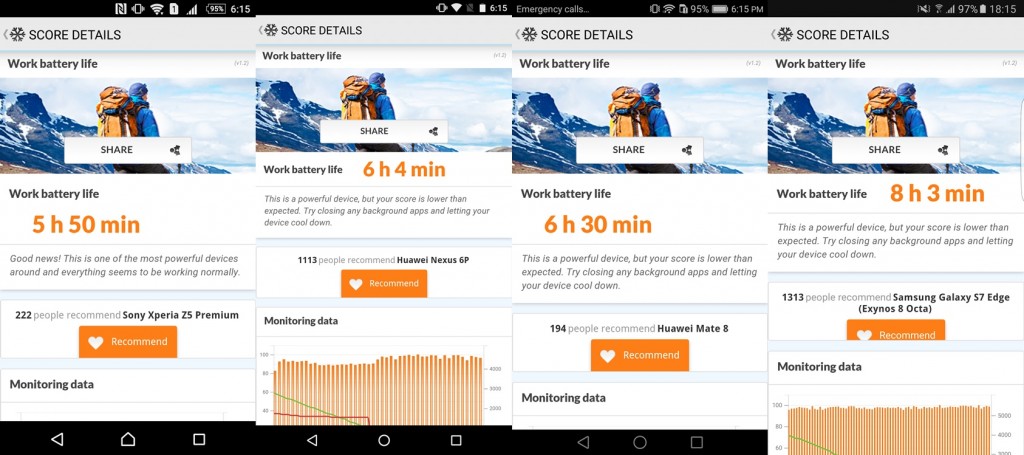
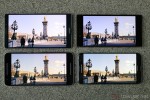
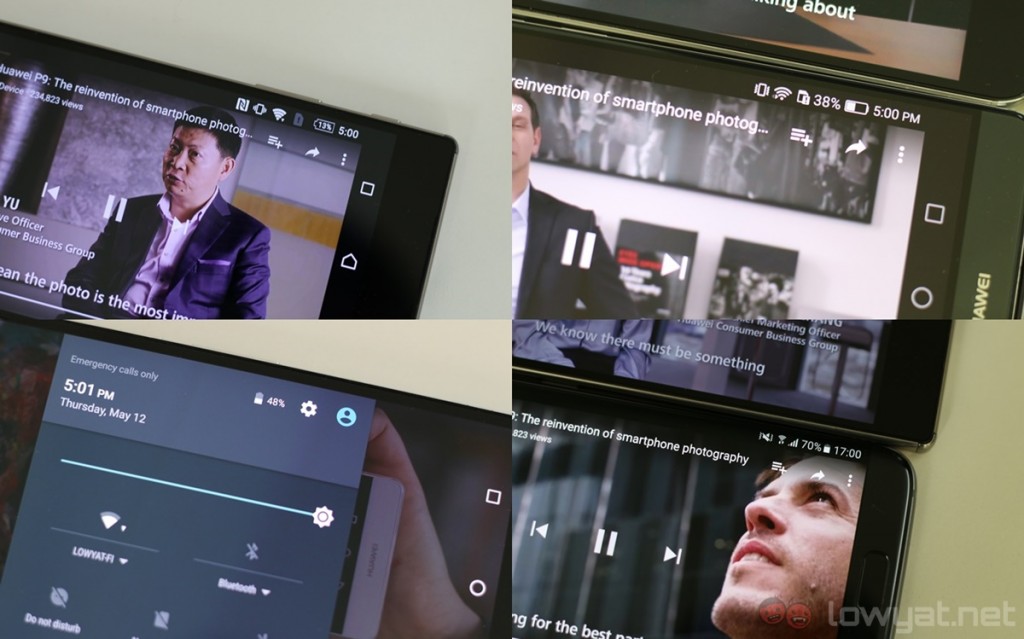

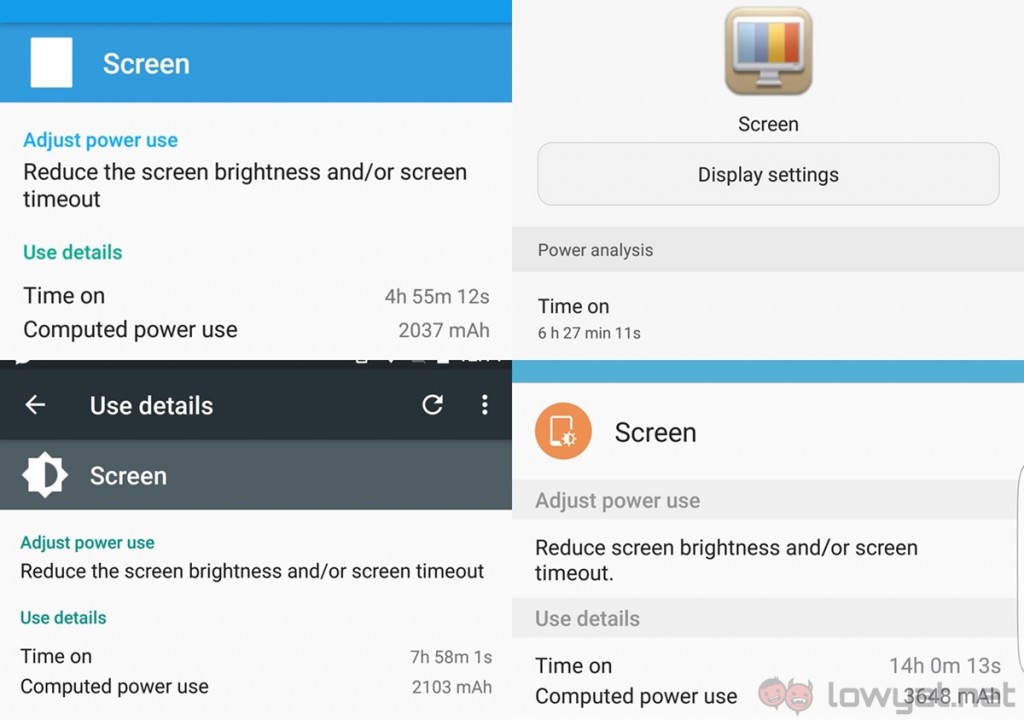

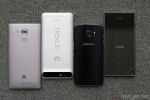
You reader may also like to know something about time stamp photos samsung s7
ReplyDelete